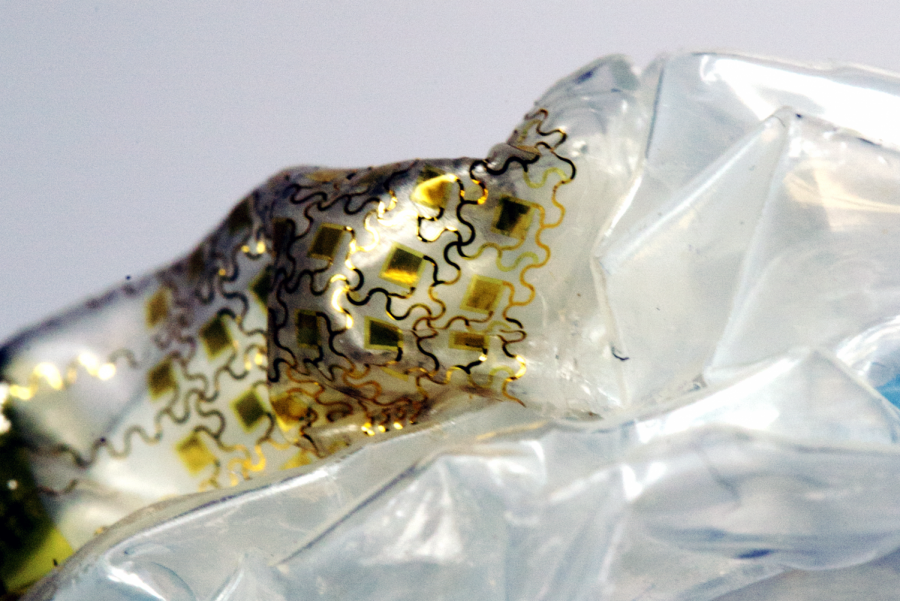Northwestern engineers develop new medical instruments to improve treatment for cardiac diseases
Courtesy of Northwestern University and the George Washington University
A group of engineers from Northwestern and the George Washington University recently developed a new balloon-shaped catheter that will improve treatment for cardiac arrhythmia. They have already created a company called NuSera Biosystems that will help commercialize the instrument.
September 24, 2020
A group of engineers from Northwestern and The George Washington University recently developed new medical instruments with smart sensors that improve the diagnoses and treatments of cardiac diseases.
Cardiac arrhythmias occur when the electrical signals that coordinate heartbeats are not working properly, leading to an asynchronous beating of the heart. In 2019, the American Heart Association found that about 5.3 million Americans have atrial fibrillation, one of the most common types of arrhythmias.
Arrhythmias are typically treated using catheter-type probes inserted into the interior space of the heart via an artery located farther away from the heart, such as in the groin or leg. The catheter maps electrical activity at different locations of the heart, allowing surgeons to locate regions of cardiac tissue causing anomalous electrical activity.
Once a surgeon finishes mapping out the heart, the catheter is removed. A new catheter is then inserted, and it applies electrical power to the surface of the tissue, burning away regions of the heart muscle causing anomalous activity in a process known as cardiac ablation.
“But (the procedure is) clumsy because the mapping catheter is different from the ablation catheter,” McCormick Prof. John Rogers said. “It requires a highly skilled surgeon, and it requires a fairly lengthy surgical procedure to do the point-by-point mapping and then the point-by-point ablation.”
Rogers added that the team has developed a new kind of balloon catheter that combines everything into one device. The new catheter has dense arrays of electrodes for mapping, electrodes for performing the ablation, sensors that map the temperature of the heat applied to the heart and sensors that allow physicians to measure the contact of the electrodes with the inner wall surfaces of the heart to assist in the device placement.
After the catheter is placed in a desired position, it inflates and gently contacts the inner surfaces of the heart, mapping the electrical activity all at once.
“We worked with Dr. Rogers already for many years and had a number of developments,” GW Prof. Igor Efimov said. “But in this particular one, we actually believe that this will have a strong impact in clinical electrophysiology, so we filed a number of patents, we actually started a new company, so hopefully we’ll develop it in several years to apply it in the clinical ablation procedures.”
The company, known as NuSera Biosystems, will help the team take this new set of research breakthroughs and apply them for new translational applications that could have commercial value, McCormick Prof. Roozbeh Ghaffari said.
Ghaffari added that it is still very early and that the team is still trying to get things set up around new studies, do more animal model testing and collaborate with others to “drive this technology down the development path.”
“The key focus is around taking what’s a proof of concept and a paper and creating all the development that needs to happen to be able to create a product that is validated, it’s tested, it’s gone through clinical trials,” Ghaffari said.
Email: [email protected]
Twitter: @vivianxia7
Related Stories:
— NU researchers develop wearable device that helps monitor COVID-19 symptoms
― Northwestern researchers develop synthetic material that mimics living creatures
― Northwestern researchers develop a new portable neutron detecto


